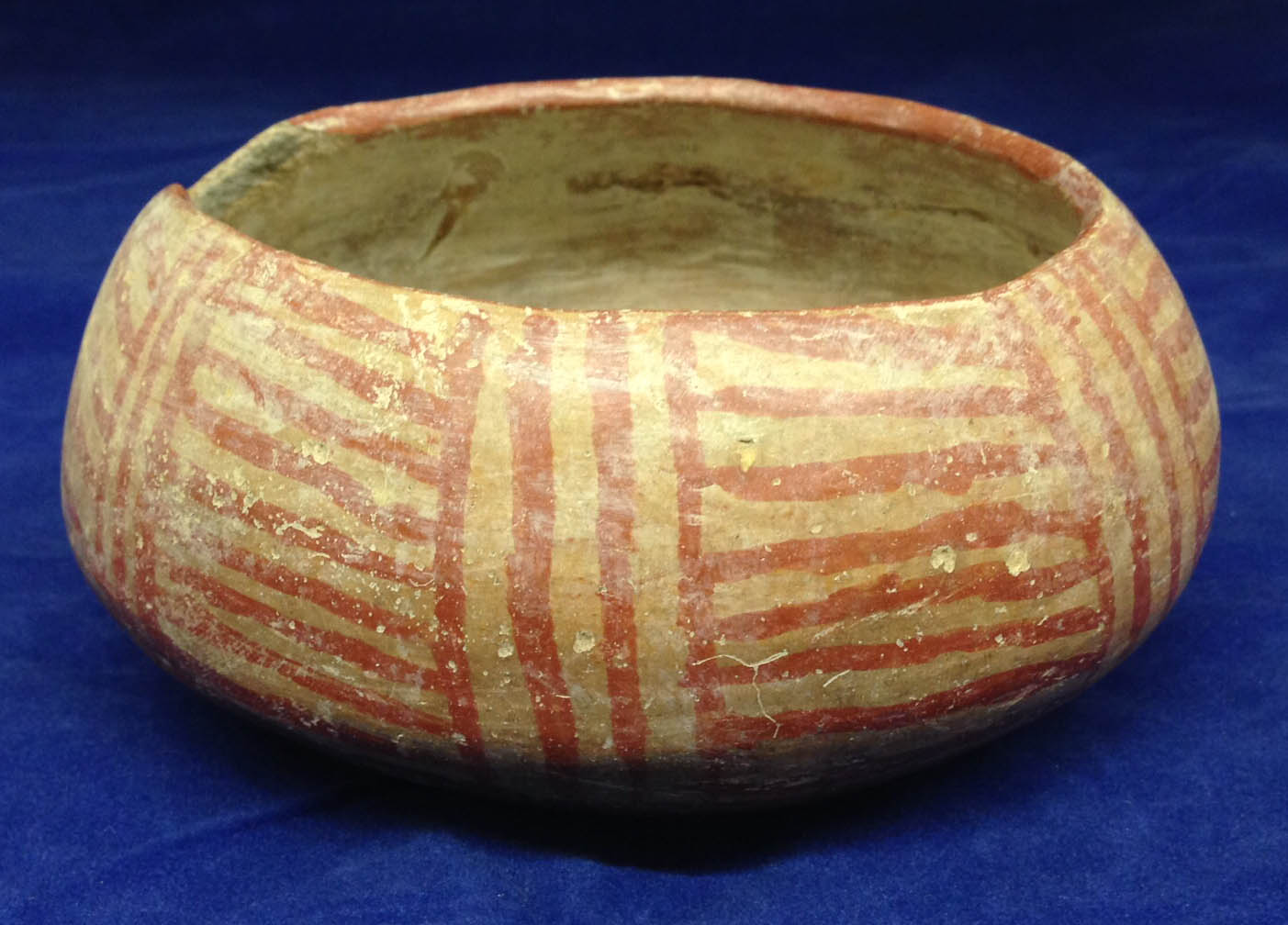When the Mogollon cultures of the American Southwest region formed between 200 and 400 CE, their early ceramics were simple, with little to no design. Around 800 CE, the Mogollon began producing pottery with geometric patterns, likely as a result of trade with and influences from the neighboring Hisatsinom (also known as the Anasazi) culture, and by 900 CE, the subculture of … [Read more...] about Mimbres Black-on-White Painted Bowl: Researched and Conserved by Aimee Westrich
The Lopsided Undecorated Ceramic Bowl and the Wobbly Ceramic Water Bottle were made by the Native American Mississippian cultures, who are well-known for their ceramic craftsmanship. Such vessels were made from local clays mixed with ground shell, which made the vessels stronger and more durable. As shown by the finger marks and scrapes visible on the interior of these … [Read more...] about Mississippian Ceramic Vessels: Researched and Conserved by Alice Heywood
The Chupícuaro cultures produced some of the most boldly patterned polychrome ceramics of Mesoamerica. Chupícuaro ceramics include hollow figures, bowls and jars of different shapes, and tripod vessels. The vessels are usually made using a brown or black clay that is painted commonly with geometric polychrome designs, usually in buff, red, and black, but also sometimes with … [Read more...] about Chupícuaro Vessels: Researched by Logan Williams and Caitlin Baker
As with Mesoamerican figurines, ceramic vessels were in production among Mesoamerican cultures by 2500 B.C.E. The making of ceramic vessels has continued to flourish through contemporary times, both as a craft for making utilitarian wares and as an artform for making elaborate, artistic vessels and sculptures. Traditional Mesoamerican ceramics were made using coil, slab, and … [Read more...] about Mesoamerican Ceramic Vessels: Researched by Caitlin Baker, Charles Andrew Corbett, and Logan Williams




